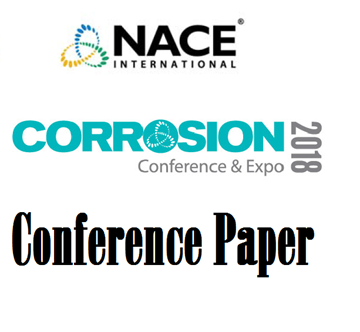Search
Products tagged with '2018 Conference Papers'
View as
Sort by
Display
per page
CORROSION POLICY AND OVERSIGHT OFFICE OF THE UNDER SECRETARY OF DEFENSE FOR ACQUISITION, TECHNOLOGY AND LOGISTICS
Product Number:
51218-106-SG
Publication Date:
2018
$20.00
CORROSION PREVENTION VIA GENERATION OF IRONMAGNESIUM PHOSPHATE DEPOSITION COATING
Product Number:
51218-167-SG
Publication Date:
2018
$20.00
Cost Effective Solutions for Aging Water Storage Tanks TANK REFURBISHMENT VERSUS REPLACEMENT
Product Number:
51218-096-SG
Publication Date:
2018
$20.00
Covalent Bonding of Silicone RTV Coatings
Product Number:
51218-146-SG
Publication Date:
2018
$20.00
Cutting Edge? ... EH&S Compliance, Controls and Best Practices
Product Number:
51218-110-SG
Publication Date:
2018
$20.00
Development of Self-healing Coatings by Linseed Oil Encapsulation
Product Number:
51218-169-SG
Publication Date:
2018
$20.00
DoD Corrosion Prevention and Control Standards, An Aerospace Example
Product Number:
51218-154-SG
Publication Date:
2018
$20.00
Driving Higher Performance with Ultra-high Solids Epoxy Systems for Long-term Asset Protection
Product Number:
51218-162-SG
Publication Date:
2018
$20.00
Effect of Surface Preparation Grades of Weld Seam on the Coating Performance in Marine Structures
Product Number:
51218-150-SG
Publication Date:
2018
$20.00
EFFECT OF MODELING VARIABLES UPON PROJECTION OF CORROSION INDUCED POST-TENSION TENDON FAILURES
Product Number:
51318-10496-SG
Publication Date:
2018
$20.00
Electrochemical Noise Measurements for Assessing Level of Corrosion Protection Being Afforded by a Coating to External Metal Structures Using a Hand-Held Portable Device
Product Number:
51318-10860-SG
Publication Date:
2018
$20.00
Electronic Inspection Equipment For A Field Painting Project
Product Number:
51218-087-SG
Publication Date:
2018
$20.00











